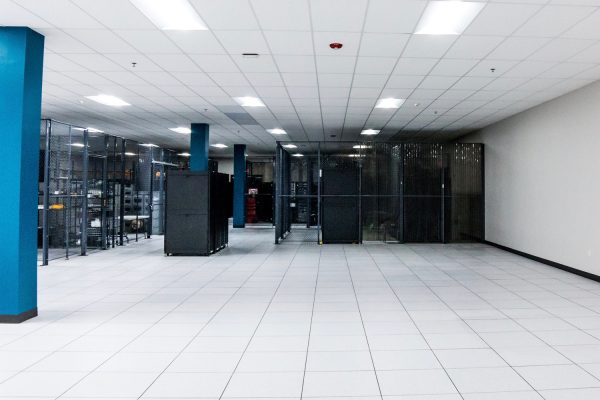According to Gartner, worldwide end-user spending on public cloud services projects to reach $591.8 billion in 2023 – an increase of 20.7% from 2022’s $490.3 billion figure.
However, beneath the appealing facade of immediate infrastructure and scale, companies are grappling with a stark reality – as they scale, the cost of cloud can eclipse its benefits. In fact, this is just one reason that is feeding into a growing a pattern of Cloud repatriation.
Recent years have seen more high-profile examples of businesses either choosing to relocate from the public cloud to a colocation data center or even their own private solution. Other examples see companies choosing a much more hybrid approach. In some instances, companies have come out with their own stories on why they never moved on to the cloud in the fist place.
Ahrefs, a leading SEO toolset provider, is a sterling testament to the latter of these trends. In 2020, they dared to reject the cloud, instead opting for a colocation data center strategy. This strategic move saved them an incredible $400 million, which they shared on their Medium blog.
For us here at TRG Datacenters, understanding these shifts not only illuminates the evolving dynamics of the market but also uncovers potential opportunities and future trajectories within our industry.
This is the first in a new series of blogs unpacking the reasons behind a seeming increase in apprehension towards cloud-based services. Join us here as we explore Ahrefs’ journey.
What Were Ahrefs’ Cloud Options?
In 2020, as Ahrefs weighed their options for cloud services, industry leaders like Amazon Web Services (AWS), Google Cloud, and Microsoft Azure surfaced as critical players.
Ahrefs, too, weighed these services as viable options. However, any cloud-based solution would require upfront payments for various services, such as:
- Storage
- Networking
- Maintenance
Consequently, there was no guarantee of cost savings, even with greater potential for scalability. This prompted them to reconsider their options, leading them to explore the possibility of colocation.
Operating from a rented colocation data center in Singapore, Ahrefs used AWS as a benchmark to understand the cost implications of running their existing infrastructure in the cloud.
For this comparison, they considered a hypothetical configuration that would likely be similar across all cloud providers:
- Two AWS EC2 instances: AWS didn’t offer an example with an equivalent number of cores as Ahrefs’ servers, so they had to consider two EC2 instances with half the cores and 1TB RAM each.
- Long-term EC2 usage: They compared the lowest price of a three-year reserved EC2 instance and five years of on-premises servers.
- Elastic Block Storage (EBS): Although a different match for their directly attached NVMe drives, the slower but cheaper gp3 EBS was chosen for simplicity.
- Storage space: They calculated the cost of storage size equivalent to their current needs divided by two, accounting for the EBS’s inherent data replication.
- Network costs: AWS charges based on the volume of data downloaded, unlike colocation. Ahrefs estimated their average server download volume to calculate the corresponding network cost on AWS.
Though not a perfect comparison due to inherent technical differences, this exercise helped Ahrefs better understand their cloud options, leading to their ultimate decision.
Interestingly, Ahrefs is not alone in its choice to avoid cloud-only solutions. Several other Asian-origin software companies, including Tencent, Naver, and SoftBank, have also opted to maintain data centers instead of going fully cloud-based.

Why Did Ahrefs Choose Colocation?
So, why did Ahrefs choose colocation over the cloud options? Various factors contributed to this decision, each shedding light on modern businesses’ diverse needs and considerations. Here are the key reasons:
- Cost-effectiveness: Ahrefs estimated a monthly expenditure of just $1,550 for maintaining their own data center, in contrast to the whopping $17,557 they would need to shell out for a similar setup on AWS. This significant price difference was largely due to the structure of AWS’s pricing model, which factored in costs for data downloaded and IOPS charges for their EBS.
- Superior performance: Ahrefs’ servers run 16 PCIe Gen 4 NVMe drives in parallel, each achieving a performance of 6-7GB/s. This outstrips the maximum 10GB/s throughput per instance offered by AWS’s EBS gp3.
- Enhanced control and customization: By operating their own data center, Ahrefs could maintain two copies of data chunks on their servers. This level of control bypasses the need for AWS’s EBS replication, which comes at an additional cost.
- Greater privacy and scalability: Colocation allowed Ahrefs to uphold privacy and scale their infrastructure according to their timetable. There was no need to pay upfront for services they may not immediately need.
- Avoidance of slower operation speeds: AWS’s EBS gp3 operates slower than Ahrefs’ NVMe drives despite being a cheaper option. This trade-off could have negatively impacted their operations, signifying that not all cloud solutions fit all company requirements.
Cloud vs. Colocation: Ahrefs’ Cost For Cost Comparison
Upon drawing a direct cost comparison between their colocation setup and a hypothetical AWS configuration, Ahrefs found startling disparities. The costs of running an AWS server equated to that of nearly 11.3 on-premise servers, drastically reducing their 20-server rack to around two AWS servers.
Over two and a half years, with Ahrefs operating 850 servers, the colocation cost totaled $39,519,025. In contrast, a similar AWS configuration would amount to a staggering $447,694,623.
The difference in costs was nothing short of massive. Ahrefs, by opting for colocation, potentially saved $408 million – making the choice obvious.
Could Ahrefs Exist as Cloud-Only?
Despite the initial allure of cloud-based infrastructures, it become clear that transitioning to such a setup was not a viable solution for Ahrefs. Let’s understand why from a strategic perspective:
- Financial imbalance: Ahrefs’ revenue amounted to around $257 million over the last three years. The estimated AWS cost for a complete data center replacement of $448 million makes it clear that Ahrefs’ revenue wouldn’t cover the cloud usage costs, making the cloud-only approach unsustainable.
- Reinvestment opportunities: Colocation’s cost-effectiveness has given Ahrefs the financial flexibility to redirect substantial funds toward other critical business areas. The savings from colocation are a financial cushion, fueling the company’s growth and development while ensuring a reliable infrastructure.
- Reliability and sustainability: It also offers Ahrefs a reliable, robust infrastructure, minimizing the risk of service disruptions. It grants them full control over their servers for quick troubleshooting and customization.
So the decision to stick with colocation is not just about cost-saving but also business sustainability and growth. Ahrefs could (likely) not exist as a cloud-only organization.
Wrap-Up
Ahrefs’ move to colocation underscores a significant shift in the data management landscape, challenging the prevailing cloud-dominant narrative. While the cloud offers scalability and flexibility upfront, it cannot support the needs of every business – particularly regarding cost-effectiveness and long-term sustainability.
As we continue to observe these shifts in the industry, stay tuned with TRG for more insights and updates on how we’re unlocking new opportunities in the evolving world of data center solutions.







